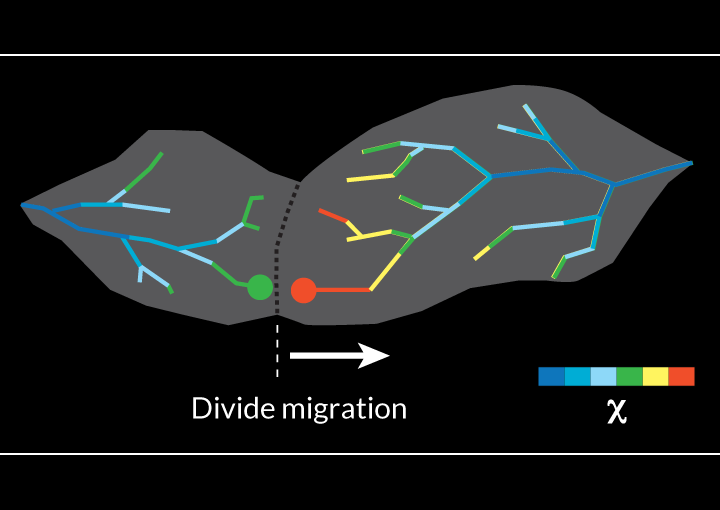Evolution of river systems

RUNNING WATERS When a value called χ varies across watershed boundaries, as it does along the crest of the Blue Ridge Mountains (thick white line), the river networks are still evolving and the ridge is shifting, a new study shows.
S.D. Willett et al/Science 2014, Courtesy of Science/AAAS









